What is substance use disorder?
Substance use disorder (SUD) is a condition that affects a person’s brain and behavior and leads to an inability to control the use of one or more legal or illegal substances. SUD can cause serious problems in a person’s physical, mental, social, and occupational functioning. Some of the common substances that people misuse are alcohol, tobacco, cannabis, opioids, stimulants, hallucinogens, and sedatives.
What are the signs and symptoms of substance use disorder?
The signs and symptoms of SUD vary depending on the type, amount, and frequency of substance use, as well as the individual’s genetic, environmental, and psychological factors. However, some of the general signs and symptoms of SUD are:
<<Get more info about Substance Use Disorder>>
- Exceeding the planned amount or duration of substance use
- Experiencing a continuous longing or futile attempts to diminish or moderate substance use
- Spending a lot of time obtaining, using, or recovering from the substance
- Suffering from a fierce hunger or thirst for the substance
- Neglecting important duties at the workplace, educational institution, or household because of substance consumption
- Carrying on with substance use even though recurrent or persistent social or relational problems that are caused or worsened by substance use
- Giving up or reducing important social, occupational, or recreational activities because of substance use
- Using the substance in situations that create a potential for harm, such as driving a vehicle or operating heavy machinery.
- Continuing to use the substance despite having physical or psychological problems caused or worsened by substance use
- Developing tolerance, which means needing more of the substance to achieve the desired effect or having a reduced effect from the same amount of the substance
- Experiencing withdrawal, which means having unpleasant physical or psychological symptoms when the substance is stopped or reduced

What are the causes and risk factors of substance use disorder?
The exact causes of SUD are not fully understood, but research suggests that a combination of biological, psychological, and environmental factors may contribute to its development and progression. Some of the possible causes and risk factors of SUD are:
<<Get more info about Substance Use Disorder>>
- Genetic factors: Some people may inherit genes that make them more vulnerable to developing SUD or influence how they respond to substances. For example, some people may have a gene variant that makes them metabolize alcohol faster, which may increase their risk of alcohol abuse disorder.
- Psychological factors: Some people may have mental health conditions, such as depression, anxiety, post-traumatic stress disorder, or personality disorders, that make them more likely to use substances to cope with their symptoms or emotions. Some people may also have low self-esteem, poor impulse control, or difficulty regulating their emotions, which may affect their decision-making and substance use behaviors.
- Environmental factors: Some people may be exposed to factors in their surroundings that increase their likelihood of using substances or developing SUD. For example, some people may grow up in families or communities where substance use is common, accepted, or encouraged. Some people may also experience stress, trauma, abuse, neglect, or peer pressure, which may influence their substance use patterns.
How is substance use disorder diagnosed?
The diagnosis of SUD is based on the criteria outlined in the Diagnostic and Statistical Manual of Mental Disorders, Fifth Edition (DSM-5), which is the standard reference for mental health professionals. According to the DSM-5, a person has SUD if they meet two or more of the 11 criteria listed above in the past 12 months. The severity of SUD is determined by the number of criteria met: mild (2-3 criteria), moderate (4-5 criteria), or severe (6 or more criteria).
The diagnosis of SUD also requires specifying the type of substance involved, such as alcohol, cannabis, opioids, etc. Some substances may have specific criteria or modifiers that apply to them. For example, alcohol use disorder may be accompanied by a specifier of “in early remission” or “in sustained remission” if the person has not met the criteria for SUD for at least 3 or 12 months, respectively.
The diagnosis of SUD may also involve a comprehensive assessment of the person’s medical history, physical examination, laboratory tests, and psychological evaluation to rule out other possible causes of the symptoms and to identify any co-occurring conditions, such as mental health disorders or physical illnesses.
How is substance use disorder treated?
The treatment of SUD depends on the type and severity of the disorder, the person’s preferences and goals, and the availability of resources and services. The treatment of SUD may involve one or more of the following components:
- Detoxification: This is the process of safely and gradually reducing or eliminating the substance from the body, while managing the withdrawal symptoms and preventing complications. Detoxification may be done in an inpatient or outpatient setting, depending on the substance, the level of dependence, and the person’s medical condition. Detoxification may also involve the use of medications, such as methadone, buprenorphine, or naltrexone, to ease the withdrawal process and reduce the cravings for opioids.
- Medication: This is the use of pharmacological agents to treat the symptoms or complications of SUD or to prevent relapse. Medication may be used in combination with behavioral therapies or other forms of treatment. Some of the medications that are used for SUD are:
- Antabuse (disulfiram), which causes unpleasant reactions, such as nausea, vomiting, and flushing, when alcohol is consumed, thus discouraging its use
- Naltrexone, which blocks the effects of opioids and alcohol on the brain, thus reducing their rewarding and reinforcing properties
- Acamprosate, which helps restore the balance of neurotransmitters in the brain that are affected by chronic alcohol use, thus reducing the negative emotional states that may trigger relapse
- Bupropion, which acts on the dopamine and norepinephrine systems in the brain, thus reducing the cravings and withdrawal symptoms associated with nicotine dependence
- Behavioral therapies: These are psychological interventions that aim to modify the person’s thoughts, feelings, and behaviors related to substance use and to enhance their coping skills, motivation, and self-efficacy. Behavioral therapies may be delivered in individual, group, family, or couples settings, depending on the person’s needs and preferences. Some of the common behavioral therapies that are used for SUD are:
- Cognitive-behavioral therapy (CBT), which helps the person identify and challenge the distorted or irrational beliefs and thoughts that may lead to substance use and to replace them with more realistic and adaptive ones
- Contingency management (CM), which uses positive reinforcement, such as vouchers, prizes, or privileges, to reward the person for abstaining from substance use or engaging in prosocial behaviors
- Motivational interviewing (MI), which uses a collaborative and non-judgmental approach to elicit the person’s own reasons and readiness for change and to resolve their ambivalence or resistance
- Relapse prevention (RP), which teaches the person to anticipate and cope with the high-risk situations and triggers that may lead to relapse and to develop a plan of action to prevent or minimize the consequences of relapse
- Support groups: These are peer-led or professionally-facilitated groups that provide a safe and supportive environment for people who share similar experiences and challenges related to substance use. Support groups may offer emotional, informational, or practical support, as well as a sense of belonging and accountability. Some of the well-known support groups that are available for SUD are:
- Alcoholics Anonymous (AA), which is a 12-step program that is based on the principles of spirituality, surrender, and service
- Narcotics Anonymous (NA), which is also a 12-step program that is similar to AA, but is open to people who are addicted to any type of substance
- SMART Recovery, which is a self-empowering program that is based on the principles of science, reason, and self-reliance
- Women for Sobriety (WFS), which is a program that is designed specifically for women and is based on the principles of positivity, responsibility, and growth
- Rehabilitation programs: These are structured and intensive programs that provide a comprehensive and holistic approach to the treatment of SUD. Rehabilitation programs may be residential or outpatient, depending on the person’s level of care and needs. Rehabilitation programs may offer a variety of services, such as medical care, medication, behavioral therapies, support groups, education, vocational training, life skills, recreation, and aftercare.
How can substance use disorder be prevented?
The prevention of SUD is a complex and multifaceted endeavor that requires the collaboration of individuals, families, communities, and society. Some of the possible strategies that may help prevent or reduce the risk of SUD are:
<<Click Here To Get Instant Access>>
- Educating the public about the harmful effects and consequences of substance use and misuse, as well as the benefits and rewards of healthy and positive alternatives
- Promoting the development of protective factors, such as self-esteem, resilience, coping skills, social support, and positive role models, among children, adolescents, and adults
- Reducing the availability and accessibility of substances, especially for minors, through laws, regulations, policies, and enforcement
- Providing screening, assessment, and early intervention for people who are at risk of developing SUD or who have signs
- and symptoms of SUD or who have co-occurring conditions, such as mental health disorders or physical illnesses
- Encouraging and supporting the people who are affected by SUD or who are in recovery to seek and adhere to the appropriate treatment and aftercare services
- Advocating and lobbying for the improvement and expansion of the prevention, treatment, and recovery resources and systems for SUD
Conclusion
Substance use disorder is a serious and complex condition that affects millions of people around the world. It can have devastating impacts on the individual’s health, well-being, relationships, and productivity. However, SUD is not a hopeless or incurable condition. With the right combination of medication, behavioral therapies, support groups, and rehabilitation programs, recovery is possible and achievable. If you or someone you know is struggling with SUD, do not hesitate to reach out for help. There are many resources and services available to help you overcome your challenges and live a fulfilling and rewarding life.
Important Notice:
The information provided on “health life ai” is intended for informational purposes only. While we have made efforts to ensure the accuracy and authenticity of the information presented, we cannot guarantee its absolute correctness or completeness. Before applying any of the strategies or tips, please consult a professional medical adviser.










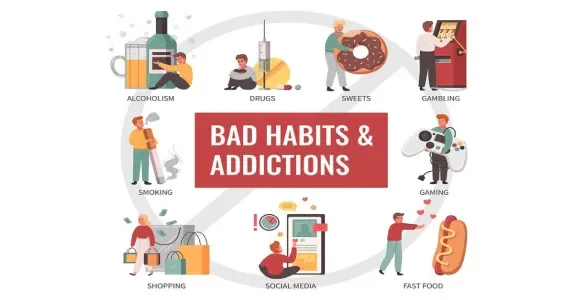

4 comments
As I dig deeper into your website’s information base, I’m amazed at how much you have to offer. We look forward to a future full of more success and new ideas.
Awesome! Its genuinely remarkable post, I have got much clear idea regarding from this post
Thanks I have just been looking for information about this subject for a long time and yours is the best Ive discovered till now However what in regards to the bottom line Are you certain in regards to the supply
I loved you even more than you’ll say here. The picture is nice and your writing is stylish, but you read it quickly. I think you should give it another chance soon. I’ll likely do that again and again if you keep this walk safe.